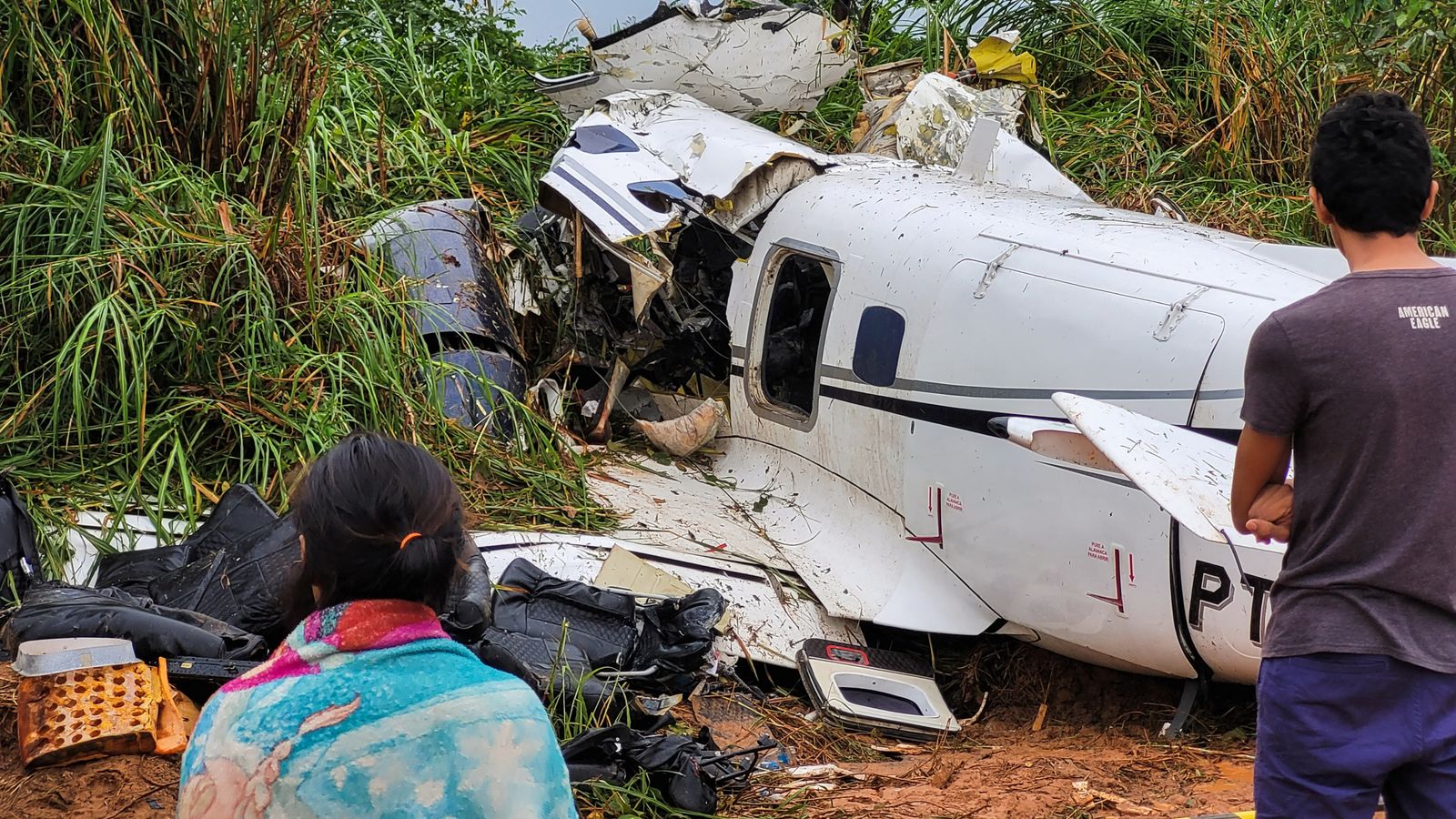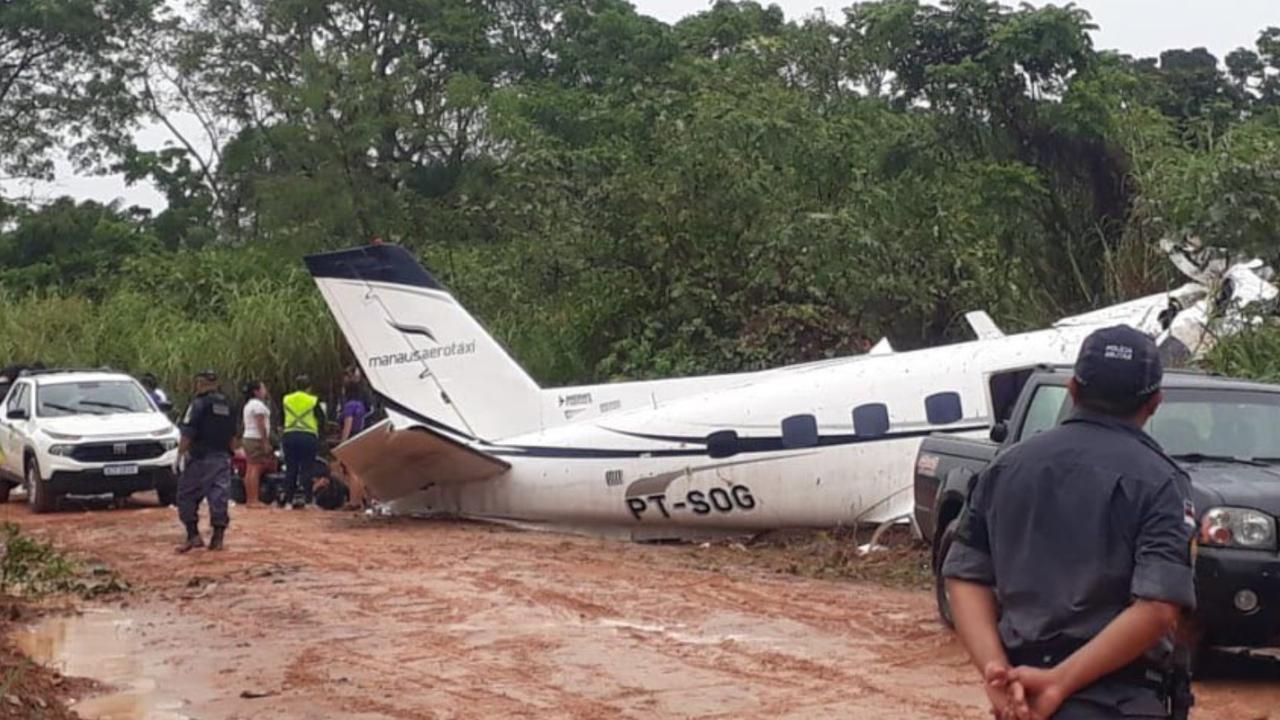Recent Plane Crashes in Brazil
Brazil has unfortunately experienced a number of plane crashes in recent years, resulting in tragic loss of life. These incidents highlight the importance of aviation safety and the need for ongoing investigation and preventative measures.
Recent Plane Crash Incidents in Brazil
The following is a list of recent plane crashes in Brazil, including details about the date, location, aircraft type, and number of casualties:
- Date: August 16, 2023
Location: Near the city of Alta Floresta, Mato Grosso
Aircraft Type: Cessna 206
Number of Casualties: 5
Circumstances: The aircraft, carrying a group of tourists, crashed shortly after takeoff. The cause of the crash is currently under investigation. - Date: July 28, 2023
Location: Near the city of Manaus, Amazonas
Aircraft Type: Cessna 206
Number of Casualties: 2
Circumstances: The aircraft, carrying a pilot and a passenger, crashed in a remote area. The cause of the crash is currently under investigation. - Date: June 15, 2023
Location: Near the city of Rio de Janeiro, Rio de Janeiro
Aircraft Type: Boeing 737-800
Number of Casualties: 0
Circumstances: The aircraft, operated by GOL Airlines, experienced a bird strike shortly after takeoff. The pilot was able to safely land the aircraft at Rio de Janeiro International Airport.
Investigations and Causes of Plane Crashes
Investigations into plane crashes are typically conducted by the Brazilian National Civil Aviation Agency (ANAC). These investigations aim to determine the cause of the crash and identify any contributing factors. Potential causes of plane crashes can include:
- Pilot error: This can include mistakes in navigation, communication, or decision-making.
- Mechanical failure: This can include problems with the aircraft’s engines, airframe, or other systems.
- Weather conditions: Severe weather can create hazardous conditions for aircraft, leading to crashes.
- Terrorism: While rare, terrorism can be a factor in plane crashes.
Support for Victims and Families
In the aftermath of a plane crash, support is provided to the victims and their families. This includes:
- Medical assistance: Injured survivors are provided with immediate medical attention.
- Psychological counseling: Grief counseling and support services are offered to those affected by the crash.
- Financial assistance: Financial aid may be available to families of victims.
Ongoing Efforts to Improve Aviation Safety
Brazil’s aviation authorities are constantly working to improve aviation safety. This includes:
- Enhancing pilot training: Pilot training programs are regularly updated to ensure pilots have the necessary skills and knowledge.
- Implementing stricter regulations: New regulations are introduced to improve aircraft maintenance and safety standards.
- Investing in technology: Advanced technologies are being implemented to improve air traffic control and enhance aircraft safety.
Impact of Plane Crashes on Brazilian Aviation

Recent plane crashes in Brazil have had a significant impact on the country’s aviation industry, raising concerns about safety and public confidence. These incidents have prompted a closer examination of safety protocols, regulatory oversight, and the overall performance of Brazilian airlines.
Safety Concerns and Public Confidence
The occurrence of plane crashes inevitably raises concerns about the safety of air travel. In the wake of such incidents, public confidence in the aviation industry can be shaken, leading to a decline in passenger numbers and potential financial losses for airlines. These concerns are amplified when crashes involve major airlines or result in a significant number of casualties. The Brazilian aviation authorities must address these concerns by demonstrating their commitment to safety and transparency.
Response of Brazilian Authorities and Aviation Agencies
Following plane crashes, Brazilian authorities and aviation agencies typically conduct thorough investigations to determine the cause of the incident. These investigations involve analyzing flight data recorders, examining aircraft maintenance records, and interviewing witnesses. Based on the findings, authorities may implement new safety measures, revise regulations, or take action against airlines or individuals responsible for any negligence or misconduct.
Safety Record of Brazilian Airlines
While Brazil has experienced its share of aviation accidents, it’s important to consider the safety record of Brazilian airlines in a broader context. Comparing the safety performance of Brazilian airlines with those in other countries, both in the region and globally, provides valuable insights. While some international organizations track and publish data on aviation safety, it’s essential to acknowledge that safety records can fluctuate over time and are influenced by various factors, including aircraft age, maintenance practices, pilot training, and air traffic control systems.
Global Context of Plane Crashes: Plane Crash Brazil Today

Air travel, despite its remarkable advancements, remains subject to the inherent risks associated with flying. While aviation safety has significantly improved over the decades, plane crashes continue to occur, serving as a stark reminder of the fragility of human endeavors. Understanding the global context of plane crashes is crucial for informing safety measures, promoting responsible air travel, and fostering public confidence in the aviation industry.
Statistics on Plane Crash Frequency, Causes, and Trends, Plane crash brazil today
Global statistics on plane crashes provide valuable insights into the frequency, causes, and trends of these incidents. Data compiled by organizations such as the International Civil Aviation Organization (ICAO) and the Aviation Safety Network (ASN) reveal that the number of fatal plane crashes has been declining steadily over the past few decades. This reduction is attributed to a confluence of factors, including advancements in aircraft design and technology, stringent safety regulations, and improved pilot training. However, despite these advancements, plane crashes still occur, highlighting the ongoing need for vigilance and continuous improvement in aviation safety.
- Human error continues to be a leading cause of plane crashes. This includes pilot error, air traffic control errors, and maintenance errors.
- Weather conditions, such as severe thunderstorms, heavy fog, and strong winds, can significantly increase the risk of accidents.
- Mechanical failures, such as engine failure, structural failure, and hydraulic failure, can also contribute to plane crashes.
- Terrorism, while less frequent, has been a significant cause of plane crashes in the past.
Role of Technology and Safety Regulations in Reducing Plane Crashes
Technological advancements and robust safety regulations have played a pivotal role in reducing the number of plane crashes worldwide. The introduction of advanced flight management systems, sophisticated collision avoidance technologies, and rigorous maintenance protocols has significantly enhanced aviation safety.
- Flight data recorders (FDRs) and cockpit voice recorders (CVRs) provide invaluable data for accident investigations, enabling safety experts to identify the root causes of crashes and implement corrective measures.
- Ground proximity warning systems (GPWSs) alert pilots of potential terrain collisions, while terrain awareness and warning systems (TAWSs) provide comprehensive terrain and obstacle information.
- Automatic dependent surveillance-broadcast (ADS-B) technology enhances air traffic control by providing real-time aircraft position and altitude information, reducing the risk of mid-air collisions.
Comparison of Safety Records of Different Aircraft Manufacturers and Airlines
While the aviation industry strives for a uniform standard of safety, the safety records of different aircraft manufacturers and airlines can vary. Organizations like the Aviation Safety Network (ASN) and the Bureau of Aircraft Accidents Archives (BIAA) maintain comprehensive databases that track accident statistics, allowing for comparisons across manufacturers and airlines.
- Aircraft manufacturers with a history of robust design and engineering practices, rigorous testing procedures, and continuous improvements in safety features tend to have lower accident rates.
- Airlines with strong safety cultures, comprehensive training programs, effective maintenance procedures, and adherence to international safety standards generally exhibit lower accident rates.
Plane crash brazil today – The news of the plane crash in Brazil today serves as a stark reminder of the fragility of life. In the face of such tragedy, we are called to find strength and solace in the face of uncertainty. The timeless abc debate on the nature of good and evil can offer a framework for understanding such events.
Ultimately, our response to this tragedy lies in choosing compassion and unity, honoring the lives lost and offering support to those affected.
The news of the plane crash in Brazil today serves as a poignant reminder of the fragility of life. As we grapple with the tragedy, let us also remember that we are all interconnected, and our actions have ripple effects.
The upcoming september presidential debate will shape the future of our nation, and it is crucial that we approach this event with compassion, understanding, and a commitment to finding common ground. May the lessons learned from this tragedy guide us towards a more peaceful and harmonious world, where we can come together to address the challenges we face with unity and purpose.

